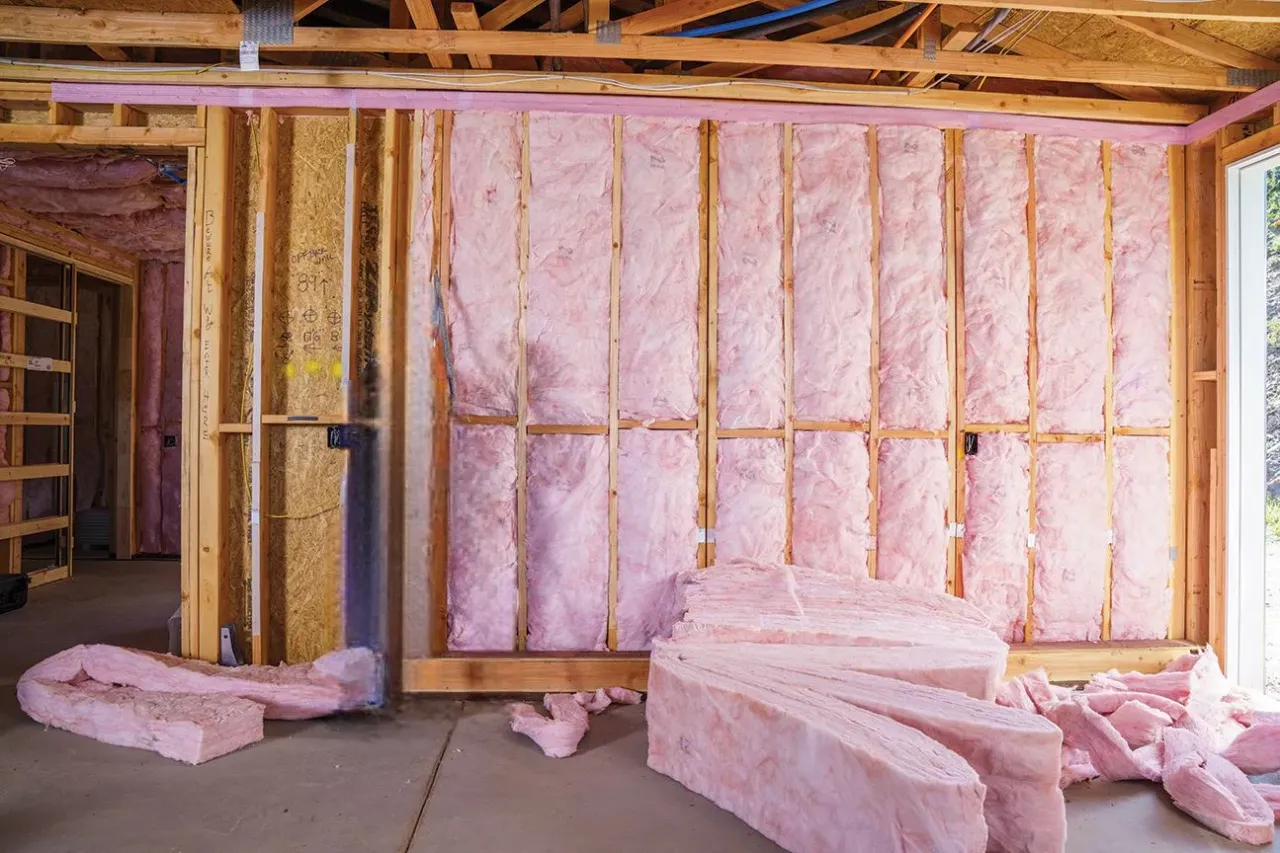
Fiberglass batt insulation is a practical and cost-effective solution for keeping your home or commercial property comfortable and energy-efficient. Whether you’re a homeowner aiming to improve your property’s energy performance or a contractor in Anderson County, Texas, this detailed guide will help you understand the steps and requirements for adequately installing fiberglass batt insulation.
This insulation method is prevalent because it’s easy to handle and widely available. Here, we’ll cover every step to ensure a proper installation, from preparation to the finishing touches.
Fiberglass batt insulation consists of flexible sheets of tiny glass fibers, which trap air and resist heat flow. It’s ideal for insulating walls, floors, and ceilings and is easy to install for residential and commercial projects.
Available in different thicknesses, fiberglass batts can effectively minimize energy transfer, ensuring that your space stays cool during hot Texas summers and warm during colder months.
Compared to spray foam or loose-fill insulation, fiberglass batts are cost-effective, easy to cut to size, and offer good sound absorption—a key reason for their popularity in Anderson County homes.
Fiberglass batt insulation installation comes with several advantages for homeowners and property owners:
To install fiberglass batt insulation, make sure you have the following tools and materials ready:
Safety is a priority when working with fiberglass insulation, as small particles can irritate the skin and lungs. Always wear protective gear and work in a well-ventilated area.
Begin by preparing the area where you’ll install the insulation. Remove any old insulation, debris, or obstructions that could prevent a snug fit. Ensure that any moisture problems are resolved before adding insulation—insulating over wet materials can trap moisture, leading to mold growth and compromised insulation performance.
Measure the width and height of the spaces between the studs or joists you’ll be insulating. Batts are typically available in standard widths, but you’ll often need to make adjustments on-site. Use your utility knife and a straightedge to cut each batt slightly larger (about ½ inches) than the cavity width—this helps ensure a tight fit.
Press each batt into the stud cavity, ensuring it fits snugly without being overly compressed. The insulation should fill the entire space without gaps, folds, or bunching.
Avoid packing the batts too tightly; compression reduces their insulating value. Ensure they make complete contact with the surrounding surfaces, including the cavities’ sides, back, and face.
Use a staple gun to attach the facing (if applicable) to the studs or joists for walls and ceilings. Staple every 6 to 8 inches along the edge. This will keep the batts securely in place and prevent any slippage over time.
If installing unfaced batts in floors or ceilings, consider using metal insulation supports (sometimes called “tiger teeth”). These supports can be inserted between joists to hold the batts securely.
Once the batts are in place, double-check the installation. Ensure no gaps, tears, or areas where the insulation does not fill the cavity. Any open spaces can allow air to pass through, reducing the insulation’s effectiveness and causing drafts.
Cut the batt to fit snugly in small spaces or around obstacles (like wiring or piping). Make sure to split the batt around the wires rather than compressing it—this way, you maintain proper insulating efficiency.
Once the insulation is installed, inspect the job thoroughly. Ensure no insulation is left out, gaps are filled, and everything looks evenly placed. Installing a vapor barrier can be crucial if your insulation lacks a facing that provides moisture control.
When deciding on insulation, it’s helpful to compare options:
Choosing the proper insulation depends on your specific needs—fiberglass batts are great for straightforward installations where cost and ease are primary considerations.
D & D Insulation has been a trusted name in Anderson County for years. We offer comprehensive insulation services for homes and commercial properties. Our experienced team knows how to install fiberglass batt insulation to ensure maximum energy efficiency and comfort.
Whether you’re insulating a new construction or retrofitting an older property, our team can help. We understand the local climate and specific needs of Anderson County residents, so we deliver insulation solutions tailored to your requirements.
Our emphasis on professionalism, local expertise, and customer satisfaction sets us apart. When you choose D & D Insulation, you’re choosing a team dedicated to helping you lower energy bills and improve the comfort of your property.
If you’re ready to improve your property’s energy efficiency with high-quality fiberglass batt insulation, the D & D Insulation team is here to help. We make the process easy, providing professional service and high-quality results. Call us at (903) 389-5705, visit our website at https://dndinsulation.com/, or email [email protected] to get started today. Let’s create a more comfortable, energy-efficient space together!
As long as proper protective gear is used during installation, fiberglass batt insulation is safe.
Fiberglass batts are effective but typically less insulating per inch than spray foam, offering air-sealing benefits.
Yes, many homeowners choose to install fiberglass batts themselves, but professional installation can ensure optimal performance.
Fiberglass batt insulation can last 20-30 years without needing replacement if appropriately installed and kept dry.